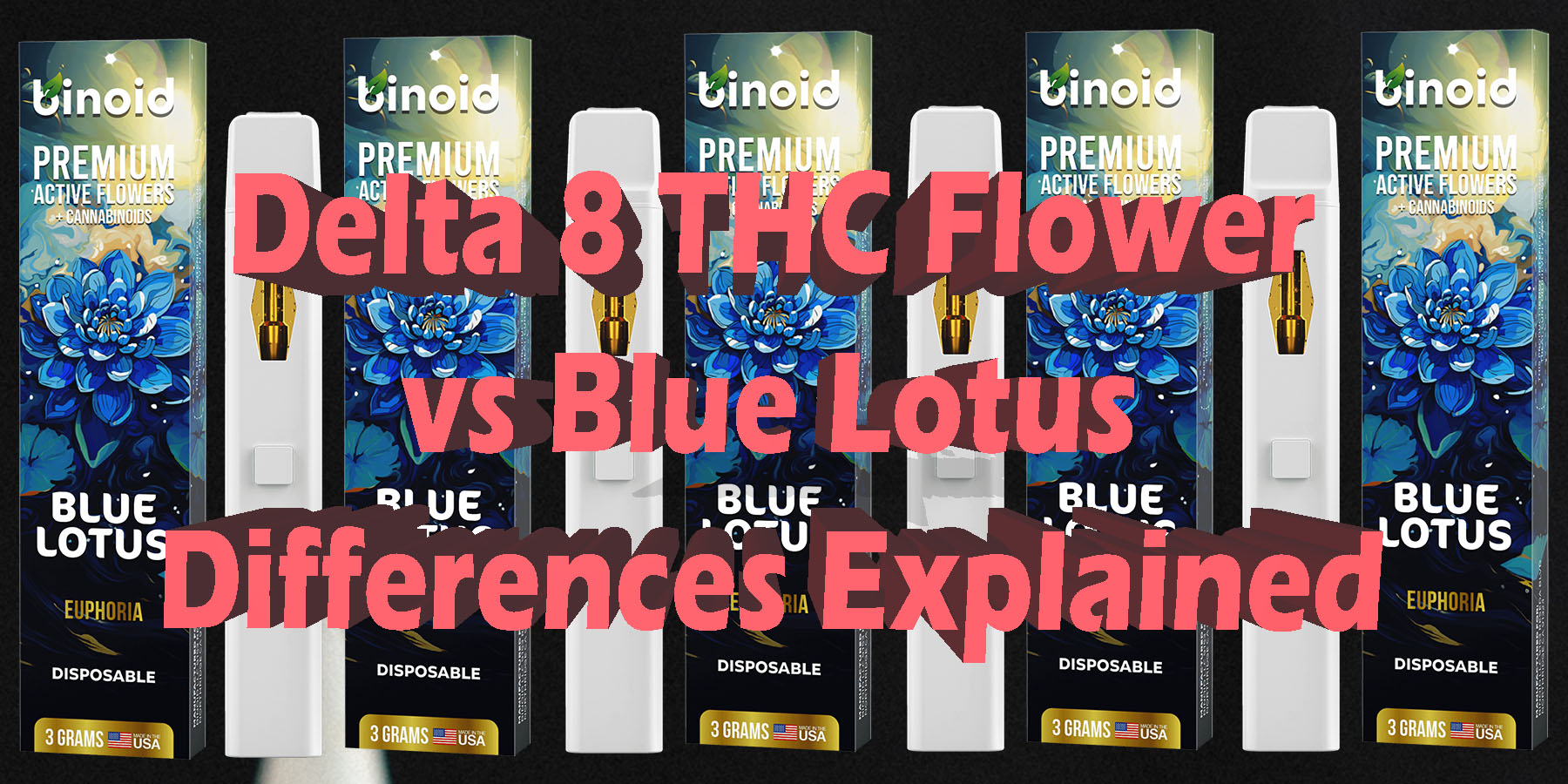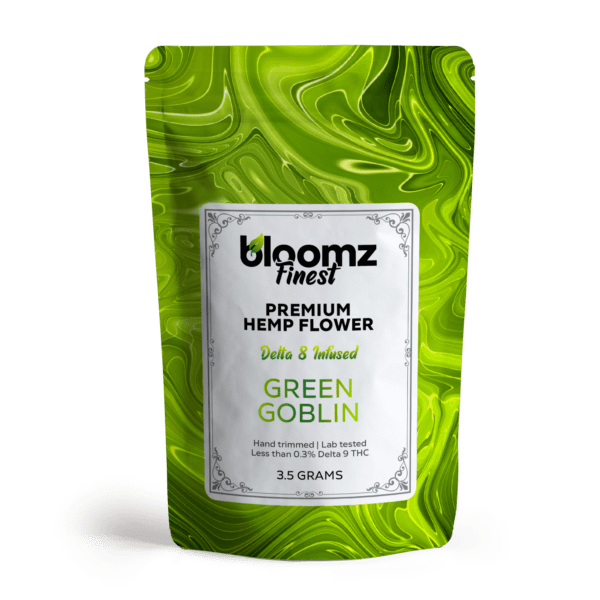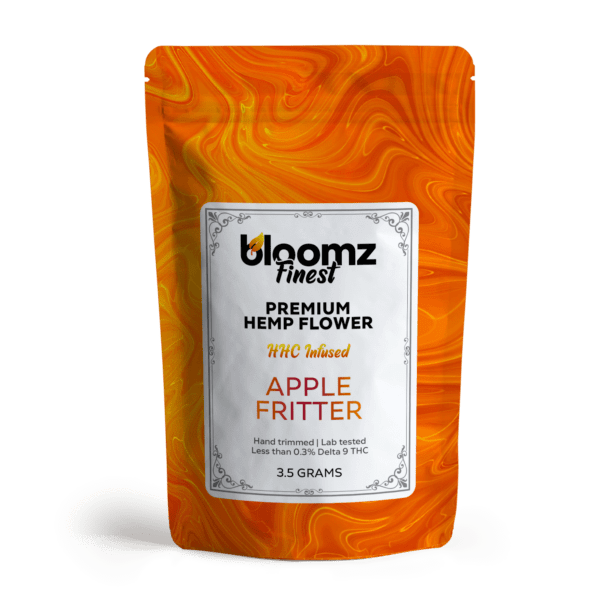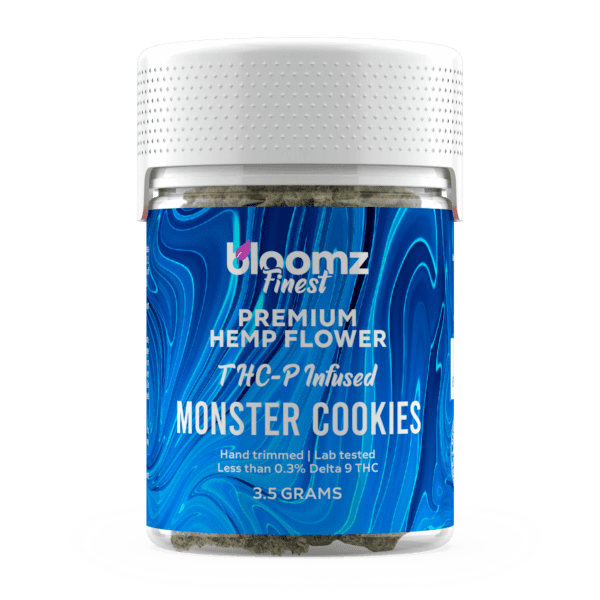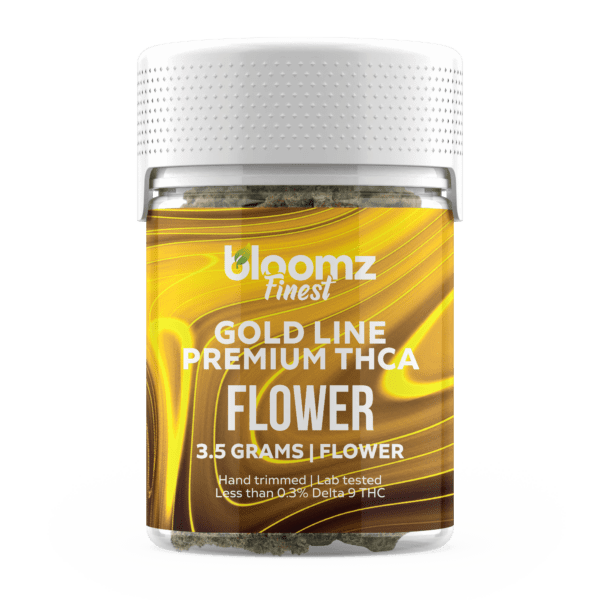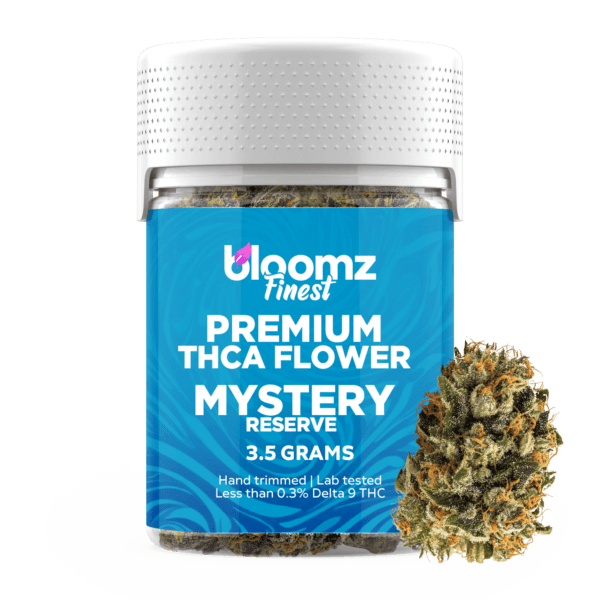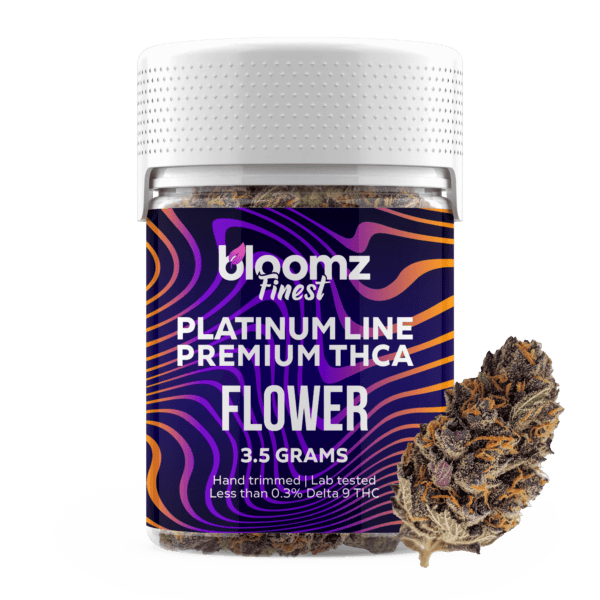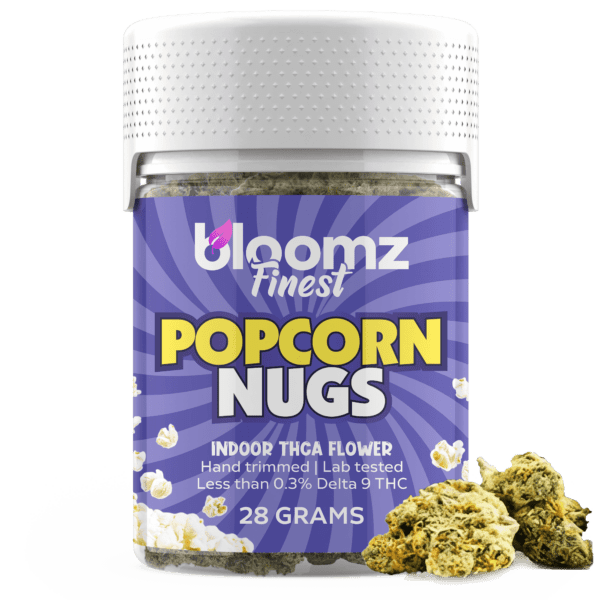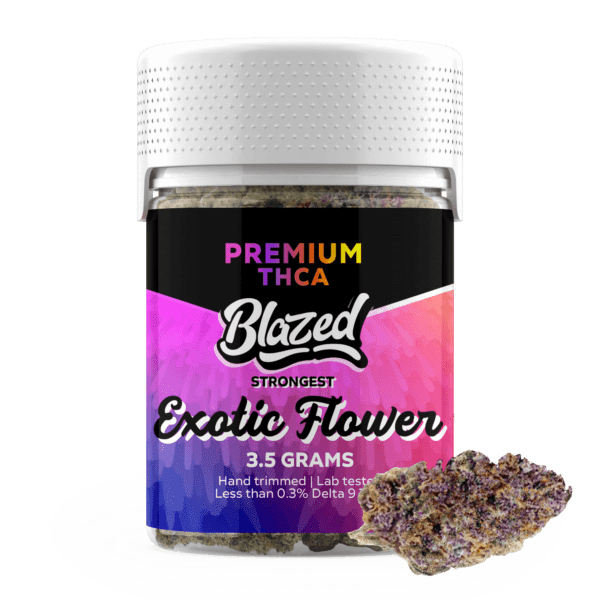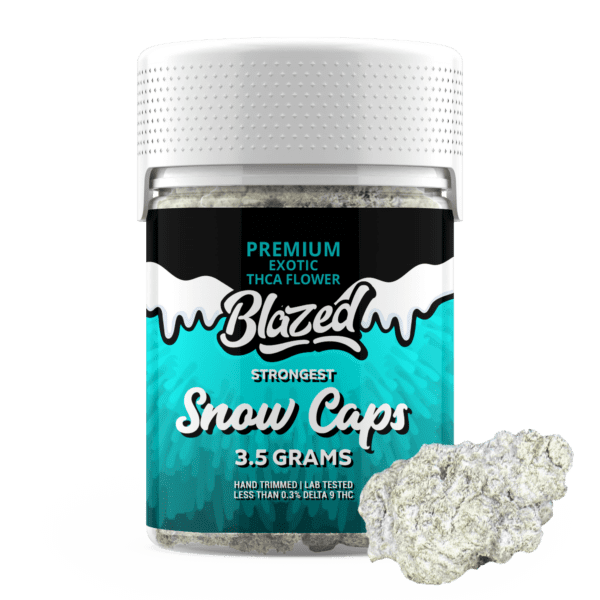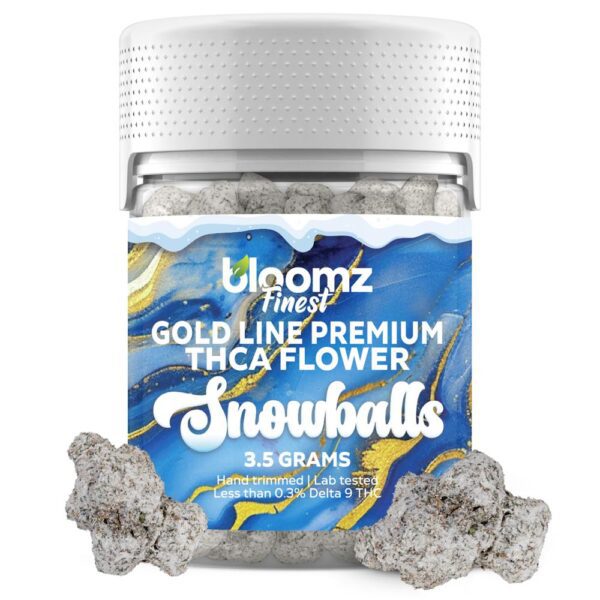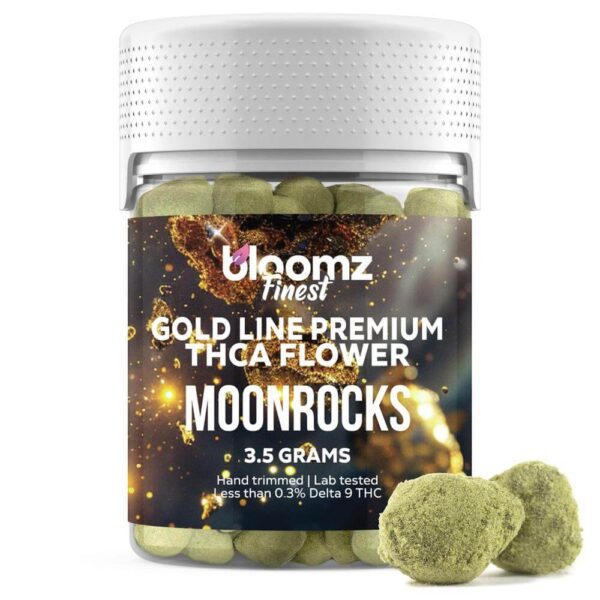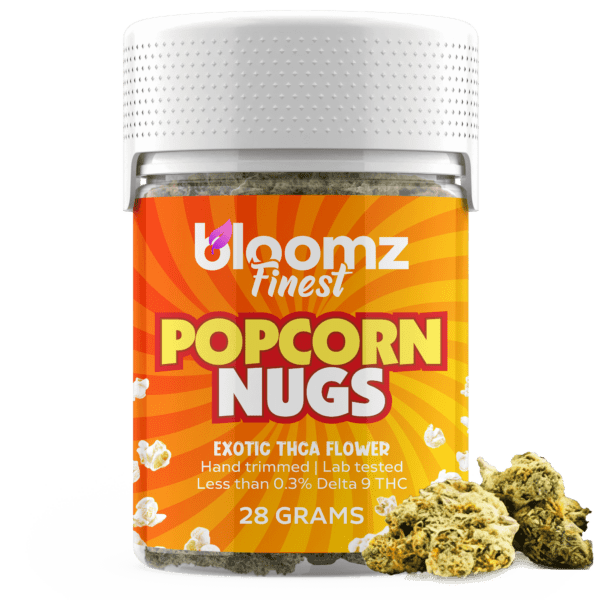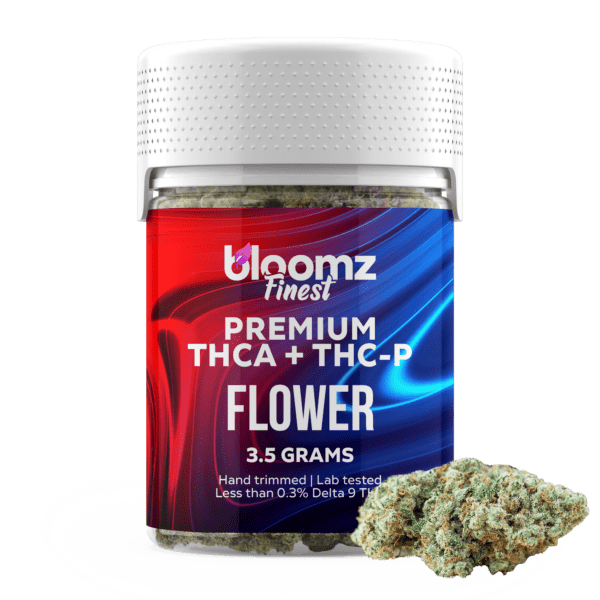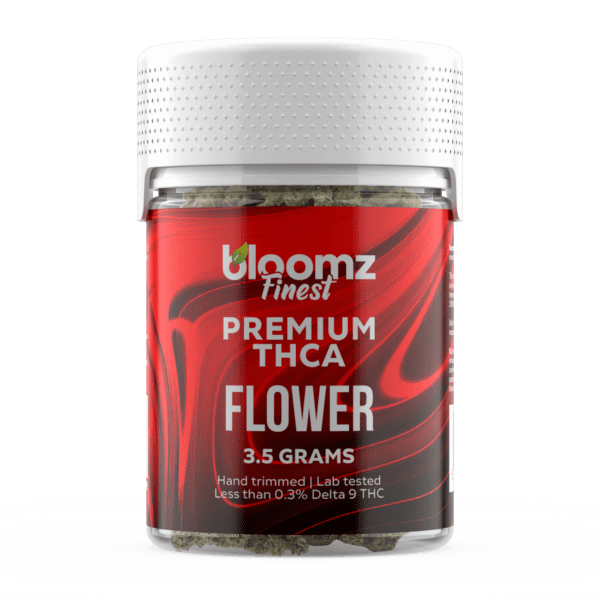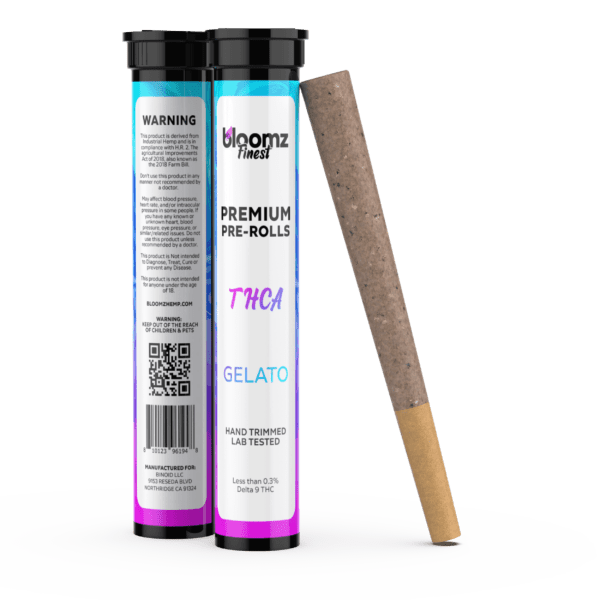In the grand, sprawling landscape of natural and lab-enhanced products, a fascinating spectrum of experiences is available to the modern explorer, ranging from the gently familiar to the profoundly enigmatic. This vast offering invites us to consider the very nature of our curiosity and the kinds of journeys we wish to undertake. On one side of this spectrum, we find Delta 8 THC flower, a testament to modern science and the artful manipulation of the hemp plant, designed to offer a predictable, clear-headed, and gentle current of euphoria. It represents a controlled and curated experience.
On the opposing side, emerging from the deep, wild, and untamed corners of the forest, is the Amanita Pantherina mushroom, a fungus of formidable power and ancient mystery. It is not a product of gentle refinement but a raw force of nature, commanding deep respect for its intense and unpredictable voyage into the subconscious. This matchup is more than a simple comparison; it is a study in contrasts, pitting the known against the unknown, the manufactured against the wild, and a gentle flight of fancy against a deep, powerful dive into the abyss of consciousness.
TO BUY DELTA 8 THC FLOWER CLICK HERE
Recommended products
Why It’s Important to Breakdown the Matchup of Delta 8 THC Flower vs. Amanita Pantherina Mushrooms
In an age where a vast and varied array of products are often presented on the same digital shelf, the responsibility for deep and thorough understanding falls upon the consumer. The specific matchup between Delta 8 THC Flower and Amanita Pantherina mushrooms is arguably one of the most critical comparisons to make, as the gulf between these two substances is not just wide—it is a vast and profound chasm.
A detailed breakdown is not merely helpful; it is an act of essential harm reduction, designed to prevent catastrophic misunderstandings of intent, effect, and safety. To approach the potent Panther Cap mushroom with the casual mindset one might bring to a mild cannabinoid like Delta 8 THC would be a grave error in judgment, and this analysis serves to erect bright, clear signposts that mark these two entirely separate realities.
The most compelling reason for this in-depth analysis is the extreme disparity in their experiential nature and intensity. Delta 8 THC flower offers a mild, manageable psychoactive experience, a gentle wave of euphoria and relaxation that operates within the familiar framework of a cannabis high. Amanita Pantherina, by stark contrast, is a leap into an entirely different and far more powerful dimension of consciousness alteration. As a significantly more potent carrier of muscimol and ibotenic acid than its famous cousin,
Amanita muscaria, the Panther Cap can induce a profoundly deep, dissociative trance that can be overwhelming, disorienting, and should only be considered by the most experienced and prepared individuals. This is not a distinction between “mild” and “strong”; it is a distinction between a recreational buzz and a powerful shamanic tool, and failing to comprehend this difference is to risk a deeply unsettling and potentially frightening experience.
Furthermore, this matchup highlights two completely different paradigms of product safety and risk assessment. With Delta 8 THC flower, the primary safety concerns are rooted in the manufacturing process: ensuring the lab conversion from CBD is clean, that there are no residual solvents, and that the product is free from contaminants. The risk is one of industrial hygiene.
For Amanita Pantherina, the risks are inherent to the fungus itself. They are pharmacological risks, centering on the high and variable potency, the greater concentration of neurotoxic ibotenic acid that must be properly converted, and the extreme unpredictability of the experience even with careful preparation. One requires trust in a lab’s quality control, while the other demands profound respect for a wild and powerful natural organism.
Finally, a clear breakdown allows us to appreciate the different intentions these products are designed to serve. Delta 8 THC flower is a product of the modern wellness and recreation market, created to provide a functional, sociable, and enjoyable psychoactive effect that fits within the context of daily life. Amanita Pantherina has no such recreational pretense; it is historically and practically a tool for deep, solitary, introspective work, more aligned with a ceremonial or therapeutic mindset than a social one. By placing them side-by-side, we can clearly define their appropriate use cases, ensuring that individuals choose a path that is truly aligned with their goals, their experience level, and their capacity to navigate the chosen journey safely.
Recommended products
Contender #1: Delta 8 THC Flower
Delta 8 THC flower has emerged as one of the most talked-about and innovative products in the modern hemp industry, representing a fascinating fusion of nature’s bounty and human scientific ingenuity. It offers a unique middle ground for those curious about the world of THC, providing a distinct experience that sets it apart from both traditional cannabis and non-intoxicating CBD flower. To the casual observer, a nug of Delta 8 THC flower looks and smells much like any other high-quality cannabis, boasting rich aromas and a crystalline sheen.
However, its true nature is more complex, as it is not a flower that grows naturally with high concentrations of Delta 8 THC. Instead, it is a meticulously crafted product, born from a multi-step process that begins with premium hemp and ends with a uniquely psychoactive final product. Its rise in popularity is a direct result of the 2018 Farm Bill, which created the legal space for hemp-derived cannabinoids and sparked a wave of innovation that brought Delta 8 THC to the forefront of the market.
At the heart of this product is Delta-8-Tetrahydrocannabinol, or Delta 8 THC – a cannabinoid and a close chemical cousin to the more famous Delta 9 THC, the primary psychoactive component in marijuana. Delta 8 THC is an isomer of Delta 9 THC, meaning they share the same chemical formula but have a slightly different atomic structure. The key difference lies in the placement of a specific double bond in their carbon chain; in Delta 8 THC, this bond is on the 8th carbon chain, while in Delta 9 THC, it is on the 9th.
This seemingly minor structural variance has a significant impact on how the molecule interacts with the body’s endocannabinoid system (ECS), particularly the CB1 receptors in the brain. Delta 8 THC binds to these receptors less strongly than Delta 9 THC, which is believed to be the primary reason for its characteristically milder, more manageable, and often clearer-headed psychoactive effects. Because Delta 8 THC occurs naturally in the cannabis plant in only minuscule, non-economical amounts, it must be created through a chemical conversion process in a laboratory setting.
The creation of Delta 8 THC flower is a sophisticated, multi-stage process that highlights the advanced capabilities of the modern hemp industry. It is crucial to understand that “Delta 8 THC flower” is not a strain of cannabis that naturally produces high levels of this cannabinoid. Instead, it is a high-quality hemp flower, typically rich in CBD or CBG, that has been enhanced with pure Delta 8 THC distillate. The quality of the final product depends heavily on the quality of both the starting hemp material and the precision of the infusion process. Allow us to elaborate:
Premium Hemp Flower Cultivation: The foundation of any good Delta 8 THC flower is a top-shelf CBD or CBG hemp flower. Expert cultivators grow terpene-rich, visually appealing, and potent hemp strains, often in controlled indoor environments to maximize quality. After harvesting, this flower is carefully dried and cured to preserve its natural aromas, flavors, and cannabinoid profile.
Delta 8 THC Isomerization: In a controlled laboratory environment, CBD isolate or distillate, which is extracted from legally grown hemp, is used as the starting material. This CBD undergoes a chemical process called isomerization. Using a combination of acids, solvents, and heat, chemists rearrange the molecules of CBD, converting them into Delta 8 THC distillate. This process requires significant expertise to ensure a pure and clean final product.
Distillate Application and Infusion: Once the potent Delta 8 THC distillate is created, it must be applied to the premium hemp flower. There are several methods for this, each with its own pros and cons. A common method is to lightly spray the flower with the heated, viscous distillate and then tumble it to ensure an even coating. Another method involves creating a powdered version by freezing the distillate and dusting it over the buds, sometimes along with CBD or CBG kief. More advanced techniques use a solventless cryo-infusion process to bind the distillate to the flower more deeply and evenly.
Third-Party Laboratory Testing: This final step is arguably the most important for consumer safety. Reputable brands will send a sample of the finished, infused flower to an independent, third-party lab. This lab tests not only for the potency of Delta 8 THC, CBD, and other cannabinoids but also for the presence of any residual solvents, pesticides, or heavy metals from the cultivation and conversion processes, ensuring the final product is both potent and safe for consumption.
The market for Delta 8 THC flower offers a growing variety of types and categories, primarily distinguished by the quality of the base hemp flower and the method of infusion. While not as diverse as the naturally grown THCA flower market, the options still allow consumers to choose a product that aligns with their preferences for aroma, potency, and convenience.
Recommended products
Understanding these categories is key to navigating the Delta 8 THC space and selecting a high-quality product that will deliver a clean and enjoyable experience. The quality of the experience is directly tied to the craftsmanship involved in the flower’s creation:
Indoor Delta 8 Flower: This is considered the premium tier. The process starts with top-shelf, indoor-grown CBD or CBG hemp flower, which is known for its dense bud structure, vibrant appearance, and powerful terpene profile. This high-quality base flower is then infused with Delta 8 THC distillate. The result is a visually stunning and highly aromatic product that offers the most flavorful and potent experience, as the rich natural terpenes of the hemp flower work in synergy with the psychoactive effects of the Delta 8 THC.
Outdoor Delta 8 Flower: This category uses hemp flower that has been grown outdoors under the sun. Outdoor hemp is often more affordable and sustainable to produce, but the buds may be less dense and visually perfect than their indoor counterparts. When infused with Delta 8 THC, this flower provides a more budget-friendly option for consumers who are primarily focused on the effects of the cannabinoid rather than the connoisseur-level aesthetics and aromas of indoor-grown flower.
Delta 8 Smalls: Similar to other types of cannabis flower, “smalls” refer to the smaller, popcorn-sized buds that are separated from the larger colas during the trimming process. These smalls come from the same high-quality indoor or outdoor plants but are sold at a discount due to their size. Delta 8 Smalls offer an excellent value, providing the same potency and experience as larger buds at a more accessible price point.
Delta 8 Nugs: This is the standard form of Delta 8 THC flower, representing the well-formed, trimmed buds that are infused and sold as the primary product. The term “nugs” simply refers to the classic, ready-to-use flower form that consumers are most familiar with. The quality can range significantly based on whether the base hemp was grown indoors or outdoors.
Delta 8 Moonrocks: These are a specialty product created for those seeking maximum potency. A Delta 8 Moonrock is made by taking a nug of premium hemp flower, coating it in a sticky layer of potent Delta 8 THC distillate, and then rolling the entire thing in a thick layer of CBD or CBG kief (the concentrated trichomes of the hemp plant). The result is a dense, incredibly powerful product that delivers a trifecta of cannabinoid effects and is best consumed in a pipe or bowl.
Delta 8 Pre-Rolls, Blunts & Joints: For ultimate convenience, many brands offer pre-rolled products. These consist of ground Delta 8 THC flower neatly rolled into papers (joints) or hemp wraps (blunts), often with a filter tip included. They eliminate the need for any grinding or rolling, providing a simple, ready-to-use option that is perfect for on-the-go use or for sharing in social settings.
A common point of confusion in the Delta 8 THC flower market revolves around the use of well-known strain names like “OG Kush” or “Sour Diesel.” It is crucial to understand that these names refer to the genetic strain of the base hemp flower that was used before the Delta 8 THC was added.
The overall effects of the final product are a synergistic blend of two key factors: the terpene profile of the original hemp strain (which dictates its Indica, Sativa, or Hybrid characteristics) and the overarching psychoactive effect of the Delta 8 THC itself. This combination allows for a nuanced experience where the foundational character of a classic strain is overlaid with the unique, clear-headed buzz of Delta 8:
Indica: When an Indica-dominant hemp strain, known for its relaxing and sedating terpene profile (often rich in myrcene), is used as the base for Delta 8 THC flower, the resulting product is geared towards deep relaxation and calm. The gentle, euphoric buzz of the Delta 8 THC combines with the naturally soothing qualities of the Indica terpenes, making it an excellent choice for evening use, unwinding after a long day, or settling into a state of chilled-out contentment and bodily comfort.
Sativa: A Sativa-dominant hemp strain, typically characterized by an uplifting and energizing terpene profile (often containing limonene or pinene), forms the basis for a more invigorating Delta 8 THC experience. The clear-headed, functional high of the Delta 8 is complemented by the stimulating nature of the Sativa terpenes. This combination is ideal for daytime use, creative pursuits, social activities, or any situation where a user desires a boost of euphoric energy without the potential for mental fog.
Hybrid: Hybrid hemp strains are crossbreeds of Indica and Sativa genetics, offering a balanced spectrum of effects. When infused with Delta 8 THC, these strains provide the best of both worlds. A Hybrid Delta 8 THC flower can deliver a pleasant, uplifting cerebral buzz coupled with a comfortable and relaxing body sensation, making it incredibly versatile. Depending on whether it is Sativa-dominant or Indica-dominant, it can be suitable for a wide range of activities at any time of day.
The legality of Delta 8 THC in the United States is one of the most contentious and rapidly evolving topics in the entire cannabinoid industry. Its legal standing originates from the 2018 Farm Bill, which legalized hemp and all its derivatives, extracts, and cannabinoids, as long as the final product contains less than 0.3% Delta 9 THC. Because Delta 8 THC can be derived from legal hemp (specifically from CBD), the industry has operated under the assumption that it is a legal hemp product. However, this interpretation is heavily disputed.
The Drug Enforcement Administration (DEA) has issued an Interim Final Rule suggesting that synthetically derived tetrahydrocannabinols are illegal controlled substances, and there is a fierce debate over whether the laboratory conversion of CBD to Delta 8 THC constitutes “synthesis.” In response to this ambiguity and concerns over the unregulated market, many states have taken matters into their own hands, explicitly banning or heavily restricting the sale of Delta 8 THC products. Therefore, while it may be accessible in some states, it is illegal in many others, and its federal status remains in a precarious state of uncertainty.
The purposes for using Delta 8 THC flower are centered around achieving a mild to moderate psychoactive experience, and the methods of consumption are largely identical to those for any other type of cannabis flower. The primary goal is to heat the flower, which vaporizes the infused Delta 8 THC distillate along with the natural cannabinoids and terpenes of the base hemp, allowing for inhalation and rapid absorption into the bloodstream.
Recommended products
-
THCA Flower – Indoor Exotics – Gold Line
$37.99$69.99 -
THCA Flower – Mystery Reserve
$41.99$79.99 -
THCA Flower – Platinum Line
$49.99$79.99 -
THCA Smalls
$149.99$256.99
The choice of method often comes down to personal preference for flavor, smoothness, and convenience. Because it is an infused product, some users may notice a slightly different burn or vapor quality compared to an all-natural flower:
Vaping (using a portable or desktop vaporizer): Vaping is a highly popular method as it heats the flower to a precise temperature without combustion. This process releases the Delta 8 THC and terpenes as a vapor, which provides a smoother and more flavorful experience than smoking. Vaping allows users to better taste the nuanced terpene profile of the base hemp flower and offers a cleaner inhalation experience, avoiding the harsh byproducts of smoke.
Smoking: This is the classic and most straightforward method. It involves combusting the Delta 8 THC flower and inhaling the smoke, typically through a pipe, bong, or by rolling it into a joint or blunt. Smoking delivers a very rapid onset of effects, usually within minutes, and a robust, full-bodied experience. The high heat of combustion ensures that all the cannabinoids are activated instantly for a potent effect.
Cooking/Baking: Delta 8 THC flower can be used to make edibles. An interesting point here is that the Delta 8 THC distillate used for infusion is already decarboxylated (activated). However, the base hemp flower is not. Therefore, if a user wants to experience the full effects of the CBD or CBG in the base flower alongside the Delta 8, they would still need to decarboxylate the entire flower in an oven before infusing it into a fat like butter or oil for use in recipes. Edibles will produce a much stronger and longer-lasting effect with a delayed onset.
The overall effects of Delta 8 THC flower are what truly set it apart and have driven its immense popularity. Most users describe the experience as a significantly milder and more manageable version of a traditional Delta 9 THC high. The psychoactive buzz is present and noticeable, characterized by a pleasant sense of euphoria, an uplifted mood, and a warm, relaxing sensation that spreads throughout the body. However, what makes it unique is its reported lack of intensity in the mental effects.
Users frequently report a clear-headed, functional, and focused high, without the potential for the anxiety, paranoia, or mental fog that can sometimes accompany strong doses of Delta 9 THC. This makes it an appealing option for those who are sensitive to Delta 9, for beginners curious about THC, or for experienced users seeking a less intoxicating option for daytime use that allows them to remain productive and socially engaged.
Pros & Cons
When considering Delta 8 THC flower, it is essential to weigh its unique advantages against its notable drawbacks. This product’s profile is a direct result of its manufactured nature and its complex legal standing, creating a specific set of pros and cons that are crucial for any potential consumer to understand before making an informed decision.
Pros:
Milder, More Manageable Psychoactive Effects: The most celebrated advantage of Delta 8 THC is its gentle psychoactive profile. It offers a noticeable and enjoyable buzz without the overwhelming intensity that can sometimes come with Delta 9 THC, making it an excellent entry point for those new to THC or for users who prefer a less potent experience.
A Clear-Headed and Functional High: Users frequently report that the Delta 8 THC high is uniquely clear-headed, allowing them to feel euphoric and relaxed while still maintaining mental focus and clarity. This “functional” aspect makes it suitable for creative endeavors, social situations, or daytime use when productivity is still desired.
Lower Reported Incidence of Anxious Feelings: For individuals who are prone to feeling anxious or paranoid with Delta 9 THC, Delta 8 THC is often reported to be a much smoother experience. Its lower binding affinity for the CB1 receptors is thought to reduce the likelihood of inducing these unwanted mental side effects, leading to a more consistently pleasant journey.
Legal Accessibility in Certain States: Due to the 2018 Farm Bill, Delta 8 THC derived from hemp is legal to sell and possess in many states where recreational Delta 9 THC is not. This provides a legal avenue for individuals in those regions to access a psychoactive THC product through a recognized commercial channel.
Synergistic Combination of Compounds: Delta 8 THC flower offers a unique synergy between the infused psychoactive cannabinoid and the rich profile of the base hemp flower. The user experiences the effects of Delta 8 THC alongside the natural CBD, CBG, and terpenes of the hemp, which can contribute to a more well-rounded and nuanced entourage effect.
Wide Variety of Product Options: The market has matured to offer a broad selection of Delta 8 THC flower products. From different strains of base hemp (Indica, Sativa, Hybrid) to various product forms like moonrocks and pre-rolls, consumers have a great deal of choice to tailor their experience to their specific preferences.
Generally More Affordable: In many markets, Delta 8 THC products are more affordable than their Delta 9 THC counterparts found in state-licensed recreational dispensaries. This price difference can make it a more accessible option for budget-conscious consumers seeking a THC experience.
Rapid Onset of Effects When Inhaled: Like any smokable flower, Delta 8 THC flower provides a very fast onset of effects, typically felt within minutes of smoking or vaping. This allows users to easily gauge the effects and titrate their dose, taking a small amount and waiting to see how they feel before consuming more.
Pleasant Body Sensation: Many users report that Delta 8 THC provides a particularly enjoyable and soothing body high. It can induce a profound sense of physical relaxation and comfort without being overly sedating, making it great for unwinding and releasing physical tension.
Flavorful Experience from Terpenes: Because high-quality Delta 8 THC flower uses premium, terpene-rich hemp as its base, the smoking or vaping experience can be incredibly flavorful and aromatic. This allows users to enjoy the complex taste profiles of famous cannabis strains in a new and legally accessible format.
Cons:
Highly Contentious and Unstable Legal Status: This is the most significant drawback. Despite its origins in the Farm Bill, many states have banned Delta 8 THC, and its federal legality is under intense scrutiny from the DEA. The legal landscape is a confusing and rapidly changing patchwork, placing consumers at risk of unknowingly violating state laws.
Lack of Regulation and Potential Safety Concerns: The Delta 8 THC market is largely unregulated, leading to a wide variance in product quality and safety. The chemical conversion process used to create the distillate can leave behind harmful residual solvents if not performed and purged correctly. It is absolutely crucial to purchase only from reputable brands that provide comprehensive, up-to-date third-party lab reports.
It is a Manufactured, Not a Natural, Product: For cannabis purists, the fact that Delta 8 THC flower is an infused or coated product is a major con. It lacks the authenticity of a naturally grown flower, and the application of the distillate can sometimes be uneven, sticky, or harsh to smoke compared to an untouched, natural bud.
Will Likely Cause a Failed Drug Test: Despite being federally legal in some places and milder than Delta 9, Delta 8 THC is still a tetrahydrocannabinol. It will be metabolized by the body into compounds that are indistinguishable from Delta 9 metabolites on standard drug tests. Using Delta 8 THC will almost certainly result in a positive test for THC.

Contender #2: Amanita Pantherina Mushrooms
If Amanita muscaria is the famous, storybook introduction to the world of muscimol-containing fungi, then Amanita pantherina, the Panther Cap, is the advanced, more formidable chapter. This mushroom does not boast the bright, almost whimsical red cap of its cousin; instead, it presents a more subtle but no less striking appearance, with a cap ranging from dark brown to a paler, tan color, adorned with its characteristic white, shaggy warts. It is a fungus that commands immense respect among mycologists and seasoned psychonauts, known primarily for one defining trait: its potency.
The Panther Cap is widely regarded as being significantly stronger than the Fly Agaric, containing a much higher concentration of the active compounds that define this unique family of mushrooms. To engage with Amanita Pantherina is to knowingly step into a deeper and more intense version of the Amanita experience, a journey that demands greater preparation, more precise dosing, and a profound respect for its amplified power. It is not a mushroom for the casually curious but rather for the serious explorer who is deliberately seeking a more profound level of dissociation and introspection.
Amanita pantherina is a mushroom species found across Europe and Western North America, and while it shares a family with Amanita muscaria, it is a distinct entity with a much more powerful chemical profile. Visually, its brownish cap, which can vary in shade, is speckled with dense, white, removable patches, remnants of its universal veil. The core of its profound effects lies in the same two compounds found in its red-capped relative: ibotenic acid and muscimol. The critical difference is one of quantity. Scientific analyses consistently show that Amanita pantherina contains substantially higher concentrations of these alkaloids, often estimated to be four to five times more potent by dry weight. This means a much smaller amount of mushroom material is required to achieve a significant effect.
This heightened potency also amplifies the importance of proper preparation. The need to decarboxylate the more stimulating and neurotoxic ibotenic acid into the desired calming and dissociative muscimol becomes even more critical, as the higher starting concentration of ibotenic acid presents a greater risk of adverse physical and mental effects if consumed improperly. The Panther Cap’s chemistry is not different in kind, but its difference in degree is what defines its character and elevates the caution required to approach it.
The history of Amanita pantherina is less clearly defined and often subsumed within the broader lore of psychoactive Amanita mushrooms. While Siberian shamans are famously documented using Amanita muscaria, it is plausible that in regions where Amanita pantherina was more prevalent, this more potent variety would have been the preferred tool for the most serious ritualistic work. Due to the difficulty in distinguishing between the two species in ancient or ambiguous texts, much of its history is a matter of educated speculation.
However, within modern mycological and ethnobotanical circles, its reputation is clear and well-established. It is known as the “serious” Amanita, a mushroom sought out by experienced individuals who have found Amanita muscaria to be too mild or unpredictable for their purposes. Its history, therefore, is less one of widespread cultural folklore and more one of specialized, esoteric knowledge passed down among those who specifically study and explore the outer limits of fungal psychoactivity. The Panther Cap’s story is not written in fairy tales, but in the trip reports and cautionary tales of the modern psychonaut community.
Given its heightened potency, the market for Amanita pantherina products is more niche, but it generally follows the same formats as those for Amanita muscaria. These processed products are especially important for the Panther Cap, as they offer the only reliable way to ensure a somewhat standardized and properly prepared dose, mitigating some of the risks associated with the raw fungus. Reputable manufacturers take extreme care in their extraction and formulation processes, knowing that the margin for error is significantly smaller with this powerful mushroom.
The goal is to provide access to its profound effects in a package that prioritizes safety and consistency, transforming a wild and variable fungus into a product that can be approached with a measure of predictability:
Powder: Finely ground powder from dried Amanita pantherina caps is available, but it is intended for highly experienced users who are confident in their ability to measure micro-doses with extreme precision. Even a small miscalculation with a powder of this potency could lead to an overwhelmingly intense experience. It is often used to make teas or for encapsulation at home but requires the utmost caution.
Edibles: This is the most common and arguably the safest way for a person to try Amanita pantherina. Professional-grade edibles contain a meticulously measured micro-dose of a carefully prepared muscimol-rich extract. The amount of extract per gummy is significantly lower than what would be found in an Amanita muscaria product to account for the increased potency, allowing for a more controlled and approachable experience. These products are designed to make the mushroom’s effects manageable.
Disposable Vapes: As a very new and experimental frontier, vapes containing Amanita pantherina extract are appearing in some specialty markets. They promise a very rapid onset of a powerful effect, but the long-term safety of inhaling these specific alkaloids is still largely unknown. Given the mushroom’s strength, this method is likely the most intense and unpredictable way to experience its effects and should be approached with extreme caution.
Tinctures: Tinctures offer a potent and fast-acting method of consumption with a high degree of dosage control. A liquid extract allows the user to administer a precise number of drops sublingually for rapid absorption. For Amanita pantherina, tinctures are often heavily diluted to ensure that a single drop does not represent an overwhelming dose, making them a practical choice for those who wish to slowly and carefully find their ideal level.
Capsules: Capsules containing a small, precisely measured dose of powdered extract offer a convenient and tasteless method of consumption. This format is ideal for those seeking the introspective effects of the mushroom without any of the ritual or taste of other methods. As with edibles, the dosage in Amanita pantherina capsules is carefully calculated to be at a micro or low level, providing a safe entry point into its potent world.
The practice of combining Amanita pantherina extract with cannabinoids and terpenes takes on a more deliberate and strategic character due to the mushroom’s inherent intensity. While blends with its milder cousin might be about creating novel and fun flavor profiles or experiences, combinations with the Panther Cap are often designed with the goal of modulating its powerful effects. For instance, a significant amount of CBD might be included in a formulation to help ground the user and soften the edges of the profound dissociation that muscimol can induce.
A very small amount of a relaxing cannabinoid like Delta 8 THC might be added to lend a sense of familiar calm to an otherwise alien headspace. In this context, the cannabinoids and terpenes act less as co-stars and more as supportive guides, included in the formulation to make the deep and formidable journey offered by the Panther Cap a bit more navigable and less potentially jarring for the user.
The legal status of Amanita pantherina in the United States mirrors that of Amanita muscaria precisely. Because its active compounds, muscimol and ibotenic acid, are not listed as controlled substances by the federal government, the mushroom is federally legal to possess, cultivate, and sell. This is the primary reason that a commercial market for Panther Cap products, however niche, is able to exist and operate openly. Consumers can purchase these products online or in certain specialty shops without fear of federal prosecution.
However, this federal legality does not preclude states from enacting their own regulations. The most prominent example remains Louisiana, whose state law specifically bans the sale and cultivation of mushrooms containing these active alkaloids, which includes Amanita pantherina. As always, while the federal status is permissive, it is crucial for individuals to be aware of and comply with the laws of their specific state or municipality, as this is a legal landscape that could evolve over time.
The overall effects of Amanita pantherina are qualitatively similar to those of Amanita muscaria but are quantitatively far more powerful and pronounced. The experience is an amplified version of the GABA-A agonist journey: a deeper, faster, and more encompassing dive into a dissociative and dream-like state. Even at what would be considered a moderate dose, users can expect significant alterations in their perception of reality, including more profound size and time distortions. The sedative effects are much stronger, with a higher likelihood of the user falling into a deep, trance-like, or even comatose sleep for several hours.
During this state, the internal experiences, dreams, and visions are reported to be exceptionally vivid, complex, and often profoundly bizarre. The detachment from one’s body and ego can be far more complete, which can be a deeply introspective or an intensely disorienting experience. A significant risk with this heightened potency is a greater chance of experiencing delirium, confusion, cyclical thinking (loops), and partial or total amnesia of the event upon waking. It is a profoundly powerful journey that pushes the boundaries of the subconscious.
Pros & Cons
Approaching a substance as potent as Amanita pantherina requires a clear-eyed view of its distinct advantages and its significant drawbacks. The very qualities that make it appealing to a select group of experienced users are the same ones that make it unsuitable and potentially hazardous for novices. This is not a substance with a gentle learning curve, and its pros and cons are much sharper and more defined than those of its milder relatives.
Pros:
Exceptional Potency: For the seasoned explorer who is deliberately seeking a profound and deeply immersive dissociative experience, the high potency of the Panther Cap is its primary advantage. It requires a much smaller amount of material to achieve a powerful effect, which is seen as more efficient and direct by those who are familiar with and prepared for the intensity of the journey.
Profoundly Introspective and Dream-Like States: The sheer strength of Amanita pantherina can facilitate a rapid descent into deep states of introspection and incredibly vivid, lucid dreams. For individuals using it as a tool for exploring the subconscious mind in a controlled, solitary setting, this intensity can be a gateway to profound personal insights and unique inner landscapes that are less accessible with milder substances.
Federal Legal Status: Like its cousin, the Panther Cap is not a federally controlled substance in the United States. This allows for its legal purchase and possession in most states, providing a legal avenue for individuals who are specifically seeking a powerful, non-serotonergic, dissociative experience without venturing into the legally prohibited territory of other substances.
Availability in Dosed, Modern Products: The emergence of professionally manufactured edibles and tinctures has made this formidable mushroom more approachable. These products remove the significant risks associated with handling and preparing the raw fungus and offer a method of consuming a standardized, pre-calculated micro-dose, which is the only recommended way for anyone to begin exploring its effects.
A Unique Alternative to Classic Psychedelics: Amanita pantherina operates on the brain’s GABA system, providing an experience that is fundamentally different from psilocybin, LSD, or DMT. For individuals who do not react well to serotonergic psychedelics or are simply looking for a completely different mode of consciousness alteration, the Panther Cap offers a unique and powerful alternative pathway.
Subject of Deep Myological and Ethnobotanical Interest: This mushroom holds a special place for serious students of mycology and ethnobotany. Its potency, unique characteristics, and role as a more esoteric shamanic tool make it a subject of deep fascination. Engaging with it respectfully can be part of a broader journey of learning about the fungal kingdom and its complex relationship with human consciousness.
Efficiency in Micro-dosing: Due to its high concentration of active compounds, an extremely small amount of Amanita pantherina is needed for a potential micro-dosing regimen. This can make it a more cost-effective and efficient option for individuals who are experienced in this practice and are seeking the specific effects associated with muscimol at sub-perceptual levels, though extreme caution is still required.
Cons:
High Risk of an Overwhelming Experience: This is the most significant drawback. The mushroom’s potency makes it incredibly easy to accidentally take too much, which can lead to a terrifying and disorienting state of delirium, severe confusion, amnesia, and a complete loss of control. The line between a profound journey and a deeply unpleasant ordeal is exceptionally thin and unforgiving.
Elevated Toxicity Concerns: The Panther Cap contains a much higher starting concentration of the neurotoxic compound ibotenic acid. This dramatically increases the health risks if the mushroom is not prepared with expert precision to ensure full decarboxylation into muscimol. Consuming improperly prepared Amanita pantherina poses a much greater threat of severe physical illness and neurotoxic effects than its milder cousin.
Extreme Unpredictability: If Amanita muscaria is considered unpredictable, Amanita pantherina is notoriously so. The concentration of alkaloids can vary dramatically from one mushroom to the next, even from the same patch of ground. This natural variance, combined with its high potency, makes its effects incredibly difficult to forecast, posing a significant challenge even for experienced users.
Strictly Not for Beginners: This cannot be overstated. Amanita pantherina is an advanced-level psychoactive substance that should only be considered by individuals with extensive experience with altered states of consciousness, and specifically with the effects of muscimol. Its intensity and risk profile make it entirely unsuitable and potentially dangerous for anyone new to this type of exploration.
How to Go About Choosing Which Option
The choice between Delta 8 THC flower and Amanita Pantherina mushrooms is one of the most extreme and clear-cut decisions in the entire landscape of alternative products. This is not a selection between two subtly different experiences; it is a choice between two entirely different dimensions of consciousness, one engineered for manageable pleasure and the other a wild force of nature demanding utmost respect.
The right path is not determined by which is “better,” but by a frank and honest self-assessment of your experience level, your desired outcome, and your tolerance for wildly different kinds of risk. This choice demands more than passing curiosity; it requires a deliberate intention and a clear understanding of the profound chasm that separates a gentle buzz from a powerful, dissociative trance.
First and foremost, you must define the nature of the experience you seek. If your goal is to find a state of blissful, clear-headed relaxation, enhance a social gathering, or unlock a gentle wave of creative energy, Delta 8 THC flower is unequivocally the appropriate choice. Its effects are rooted in the familiar world of cannabinoids and are designed to be functional, predictable, and enjoyable in a recreational or social context.
Conversely, if your intention is a solitary, deep, and potentially perilous dive into the recesses of your own subconscious—an experience characterized by profound dissociation from reality and entry into a vivid, trance-like state—then Amanita pantherina aligns with that far more serious goal. It is a tool for the most advanced introspection, not for recreation.
Your experience level is the next critical factor and is absolutely non-negotiable in this comparison. Delta 8 THC flower is accessible to adults of all experience levels, with the standard recommendation that novices should start with very small amounts. Amanita pantherina, however, sits at the farthest end of the spectrum. It is exclusively for the seasoned explorer—the individual who is not only familiar with powerful altered states but is specifically comfortable with profound dissociation and the potential for a complete, albeit temporary, loss of connection with ordinary reality. For the vast majority of people, the answer will and should be to avoid the Panther Cap entirely due to its overwhelming potency.
Finally, consider the risk profile you are willing to accept. With Delta 8 THC flower, the primary risks are legal ambiguity in your state and the manufacturing risks of an unregulated market, which can be mitigated by choosing reputable, lab-tested brands. With Amanita pantherina, the risks are substantially more severe and are pharmacological in nature.
They include the high potential for a psychologically terrifying ordeal of delirium and confusion, as well as the physiological risks associated with its higher toxicity if sourced from an unreliable provider or prepared improperly. The choice is between a product of science that requires due diligence and a force of nature that requires expert-level caution.
|
Feature |
Delta 8 THC Flower |
Amanita Pantherina Mushrooms |
|---|---|---|
|
Primary Compound |
Delta 8 THC |
Muscimol & Ibotenic Acid (Very High Concentrations) |
|
Origin |
Manufactured (Hemp flower infused with lab-converted distillate) |
Natural (A fungus that grows in the wild) |
|
Typical Experience |
Mildly psychoactive, clear-headed “high,” relaxing, euphoric |
Profoundly dissociative, intensely dream-like, sedative, trance-like |
|
Potency |
Mild to Moderate |
Extremely High (4-5x stronger than A. muscaria) |
|
Target User |
Adults of all experience levels (with caution for novices). |
Experienced psychonauts ONLY. Not suitable for beginners. |
|
Primary Risks |
Legal ambiguity, unregulated market quality, potential for failed drug tests. |
Extreme psychological overwhelm, delirium, toxicity, amnesia. |
|
Federal Legal Status |
Contentious; derived from legal hemp but legality is debated by DEA. |
Legal (not scheduled under the Controlled Substances Act) |
|
Predictability |
Relatively high and predictable. |
Notoriously low and unpredictable. |
Choosing Your Altitude
The modern world offers us a fascinating choice in how we wish to engage with substances that alter consciousness, from the carefully calibrated to the profoundly wild. The decision between the gentle, predictable flight of Delta 8 THC flower and the powerful, high-risk ascent of Amanita Pantherina is a fundamental one. One offers a comfortable cruise at a known altitude, providing a pleasant, reliable view of an altered landscape with minimal turbulence. The other is akin to strapping into an experimental rocket, promising a glimpse of distant, unknown galaxies but demanding an expert pilot’s hand and a deep acceptance of the immense forces at play.
Ultimately, the wisest choice is born from a deep and honest knowledge of oneself: knowing not just where you want to go, but what kind of journey you are truly prepared and equipped to undertake.

